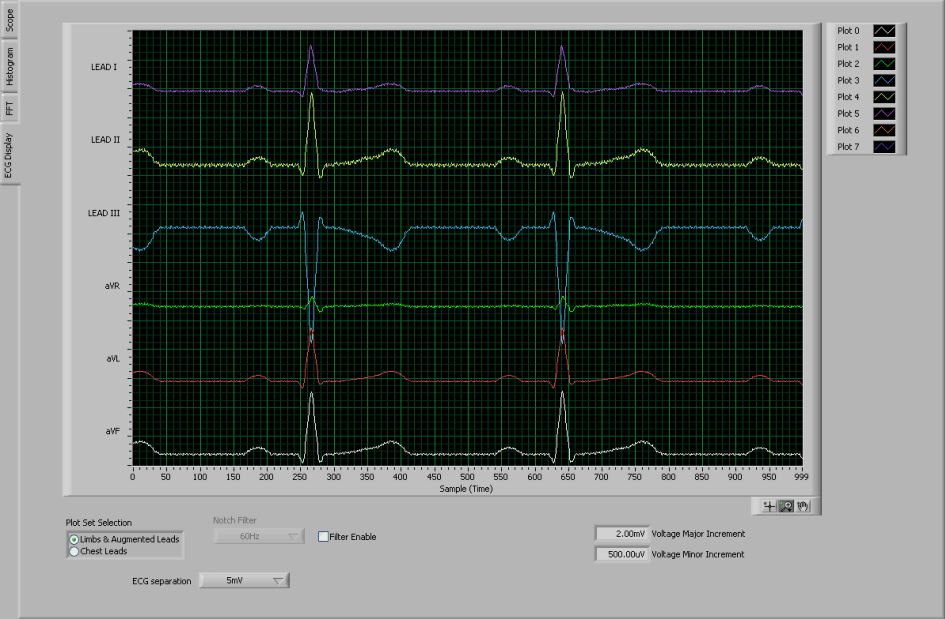SBAU171D May 2010 – January 2016 ADS1198 , ADS1298
-
ADS1298ECG-FE/ADS1198ECG-FE
- Trademarks
- 1 ADS1298ECG-FE/ADS1198ECG-FE Overview
- 2 Quick Start
- 3
Using the ADS1298ECG-FE Software
- 3.1 Application User Menu
- 3.2 Top-Level Application Controls
- 3.3 About Tab
- 3.4 ADC Register Tab
- 3.5 Analysis Tab
- 3.6 Save Tab
- 4 ADS1x98ECG-FE Input Signals
- 5 ADS1298ECG-FE/ADS1198ECG-FE Hardware Details
- ASchematics, BOM, Layout, and ECG Cable Details
- BExternal Optional Hardware
- CSoftware Installation
4.4 Normal Electrode Input
The Normal Electrode input on the MUX routes the inputs (VINP and VINN) differentially to the internal PGA, as Figure 11 illustrates. In this mode, an ECG, sine wave, or pulse generator may be connected to test the ADS1298.
Figure 34 shows a typical six-lead output when connected to a 5mVPEAK, 80BPM ECG signal.
 Figure 34. Normal Electrode ECG Connection in ECG Display Tab
Figure 34. Normal Electrode ECG Connection in ECG Display Tab